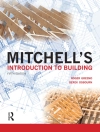This book investigates how established transport planning tools can evolve to understand and plan for the ever-changing contemporary mobilities that influence the opportunities available to individuals. It discusses existing techniques, revised in the light of the growing interest in the social implications of transport planning decisions: these include analytical tools to interpret consolidated and emerging phenomena, as well as operational tools to tackle new and existing mobility demands and needs. The book then addresses the implications of everyday mobility for individuals and communities. The result of a continuous exchange between the two authors, it brings together the results of their various research projects. Despite referring to different objects and settings, the work presented is connected by an underlying interest in the impact that mobility has on people in an increasingly mobile world, and the need to include such concerns into mobility planning and policy.
Table of Content
Enabling mobilities, reinterpreting concepts and tools.- Accessibility: enablement by access to valued opportunities.- Emerging mobilities: new practices, new needs.- Big data: hidden challenges for a fair mobility planning.- Stations: nodes and places of everyday life.- The policy implications of enabling mobilities.- Open directions for enabling mobilities.












